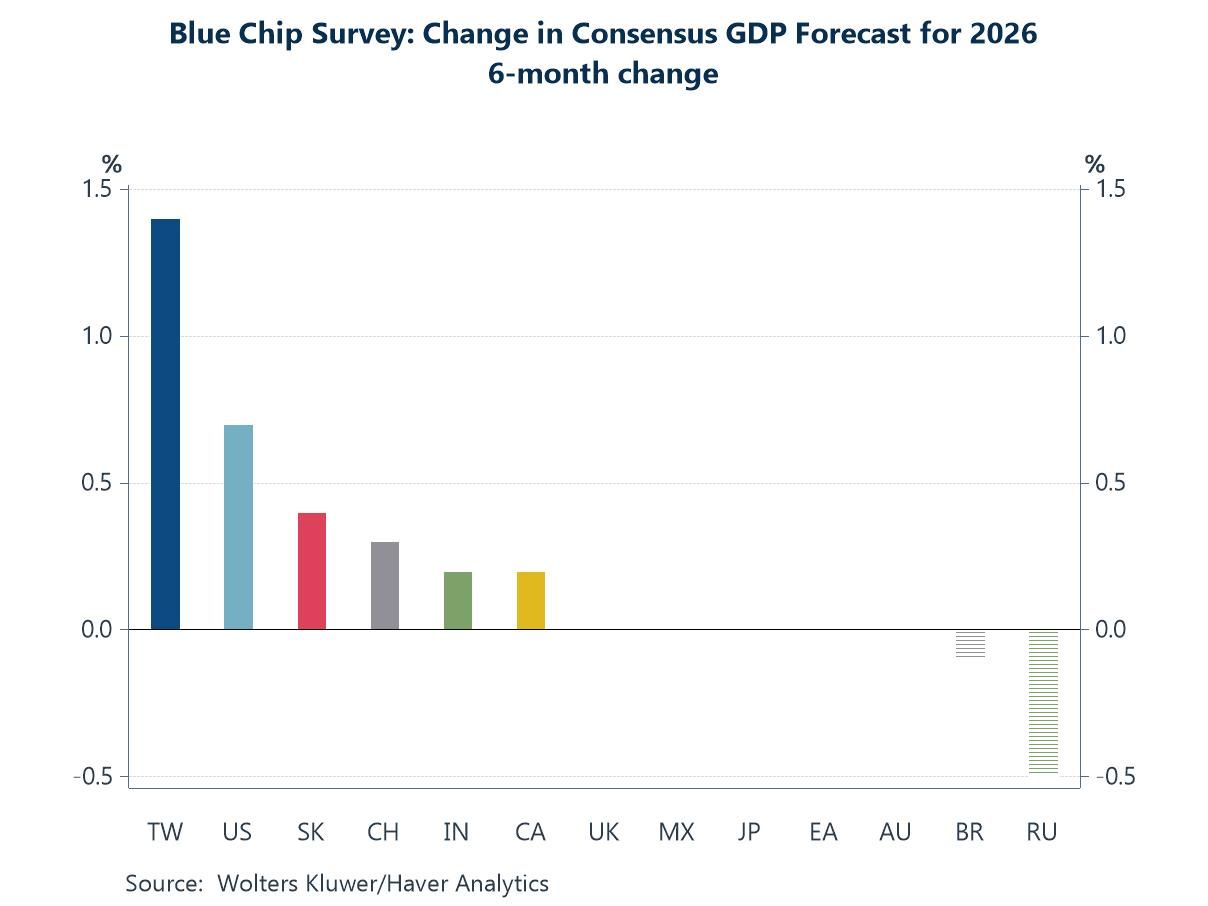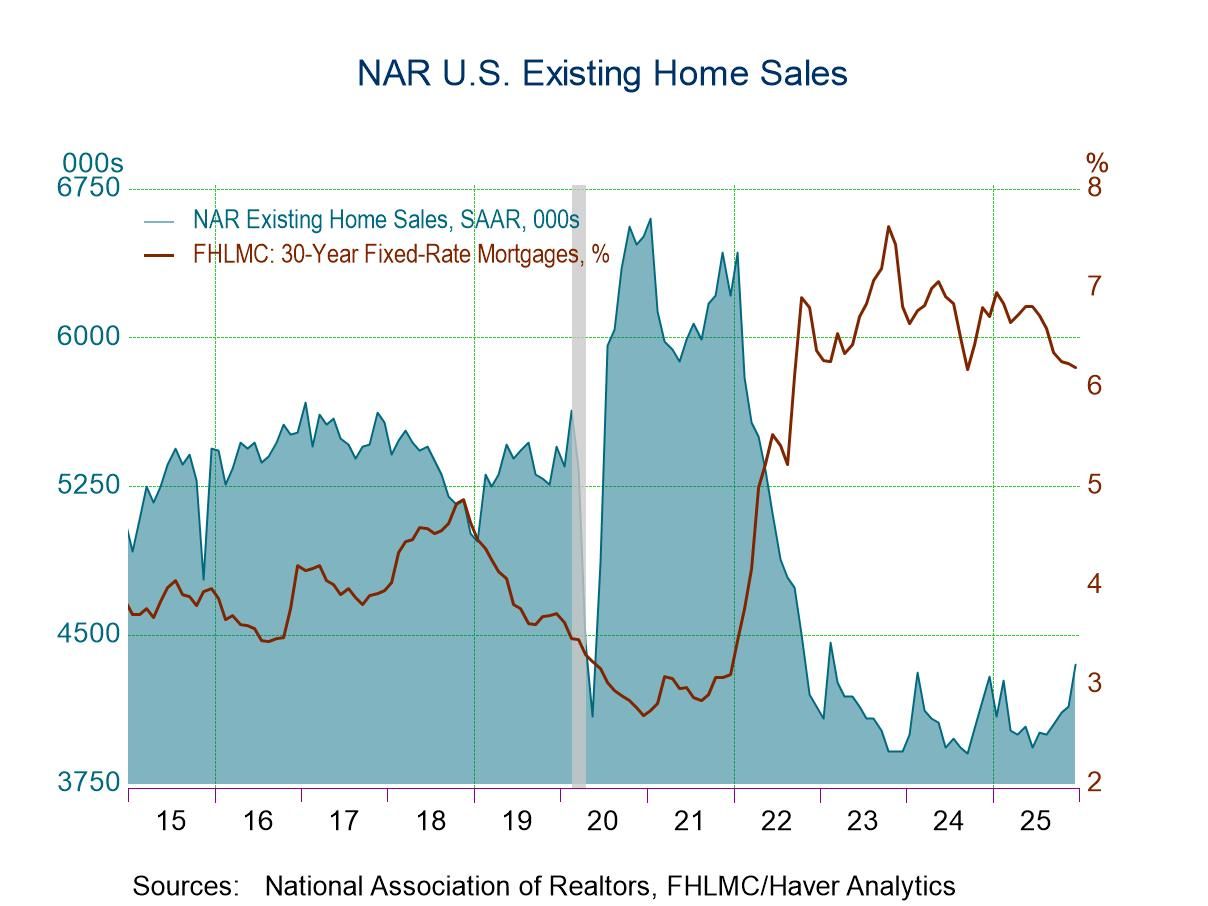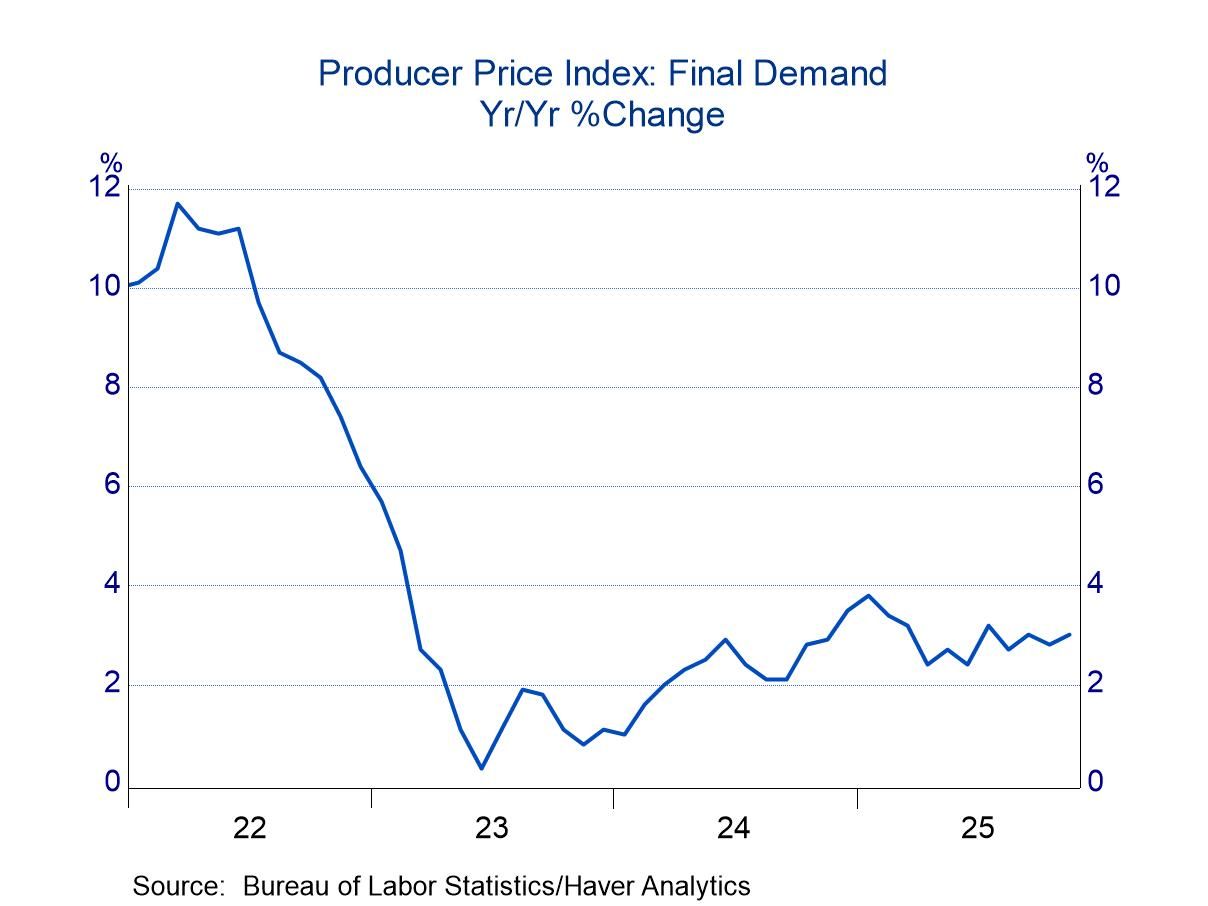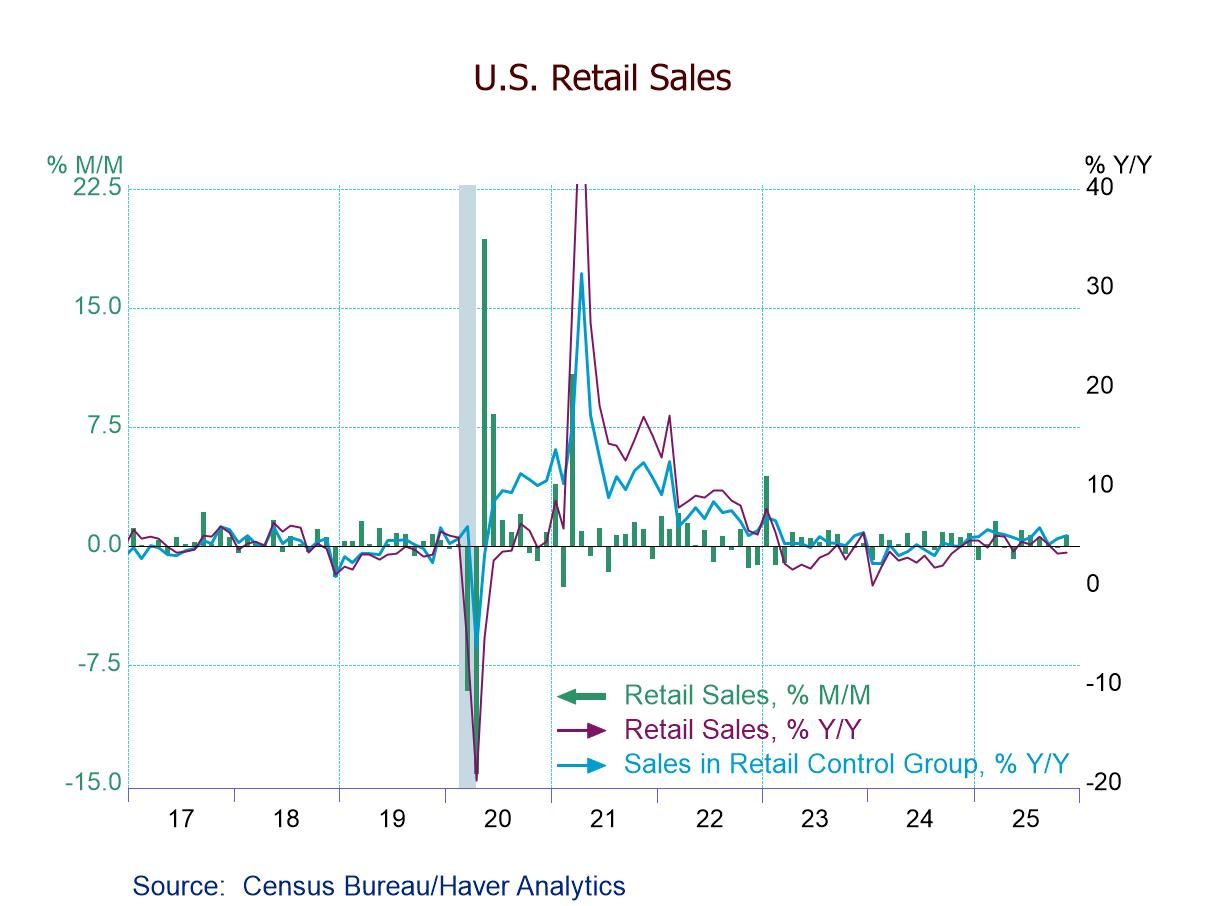EMU Area Industrial Output Falls in April, but Leaves Uptrend Intact

Industrial production in the European monetary area fell by 0.1% in April after climbing by 0.5% in March and 0.1% in February. For manufacturing the April fall was greater at -0.4% although March had posted a gain of 1% and February’s gain is 0.8%. Uptrends are still intact for the headline excluding production as well as for manufacturing.
Sequential growth rates for overall industrial production excluding construction show a decline at a 2.9% annual rate over 12-months, a gain of 0.2% at an annual rate over six-months and the three-month rise of 2.1% at an annual rate - a progression showing improvement for manufacturing. The manufacturing drop is also 2.9% over 12-months, the six-month rise is at a 1.2% pace and the three-month gain is at a 5.9% annual rate, an even stronger progression toward better growth.
In April Euro-Area manufacturing sectors showed increases month-to-month except for intermediate goods that logged that a decline of 0.4%. Consumer goods output rose by 0.3% led by nondurables and capital goods registered an increase in output of 0.7% month-to-month.
The growth rates for manufacturing sector show clear acceleration only in capital goods where output declined by 4.8% over 12-months, then deduced its decline to a 3.8% annual rate over six-months but then exploded to a 15.3% rate of increase over three-months. By comparison consumer goods output shows revival but not clear acceleration, gaining 0.4% over 12-months accelerating to a 4.4% pace over six-months but then slowing to a 3.5% annual rate over three-months. Consumer durables are a marginal candidate for acceleration as output falls at a 3.4% annual rate over 12-months and a similar 3.8% rate over six-months, but then shifts to a gain at a 3.8% annual rate over three months. Consumer nondurable goods show increases on all three horizons, but output gains slow over three-months compared to six-months. Intermediate goods output shows declines on all three horizons; the declines are gradually diminishing but not sequentially diminishing.
Quarter-to-date growth rates for industrial production show headline production rising at a 1.7% annual rate early in the second quarter compared with three-point 3% annual rate gain for manufacturing. Both consumer output and capital goods output are rising at double digit rates, consumer nondurable goods are advancing at 8.4% annual rate; only intermediate goods output is declining on the quarter-to-date, falling at a 2.8% annual rate.
Comparing output levels, the level of output on January 2020 shows overall output is still 1 1/2 percentage points below what it was over four years ago in January 2020. Manufacturing output is still lower by a little less than 1/2 of one percentage point. Durable goods output is lower by about two percentage points, while intermediate goods output is lower by about 7 percentage points. Capital goods output is slightly higher by about six-tenths of a percentage point; nondurable goods production is higher by 7.7 percentage points. Consumer goods overall show production higher by nearly seven percentage points. The consumer is king.
We rank the performance of industrial production by its year-over-year growth rates as well. On performance back to 2007 total output and manufacturing output rank around their 18th percentile, that's in the lower one-fifth of their historic queue of growth rates - a poor performance. Consumer goods output overall has a 42-percentile rank, consumer nondurables output is the strongest industrial category with a 48.8 percentile standing, close to its median, but just below the median reading at 50%. Intermediate goods rank at about their 34-percentile standing just above the lower 1/3 of their historic queue of results. Capital goods output during this period has been especially weak, having only a 13.2 percentile standing, when ranked against its historic year-over-year growth rates.
The chart above actually provides a good summary and description of what's happening. It shows that the various sector growth rates are still contracting, however, it shows progress being made by intermediate goods and consumer goods while it shows there's still erratic performance in the capital goods sector. The capital goods sector has been especially important to the German economy that continues to flounder. This report suggests that there is improvement in train and that Europe's industrial sector also remains irregular. Improvement is still in train. In the unfolding quarter it appears the growth is beginning to take hold.

Robert Brusca
AuthorMore in Author Profile »Robert A. Brusca is Chief Economist of Fact and Opinion Economics, a consulting firm he founded in Manhattan. He has been an economist on Wall Street for over 25 years. He has visited central banking and large institutional clients in over 30 countries in his career as an economist. Mr. Brusca was a Divisional Research Chief at the Federal Reserve Bank of NY (Chief of the International Financial markets Division), a Fed Watcher at Irving Trust and Chief Economist at Nikko Securities International. He is widely quoted and appears in various media. Mr. Brusca holds an MA and Ph.D. in economics from Michigan State University and a BA in Economics from the University of Michigan. His research pursues his strong interests in non aligned policy economics as well as international economics. FAO Economics’ research targets investors to assist them in making better investment decisions in stocks, bonds and in a variety of international assets. The company does not manage money and has no conflicts in giving economic advice.




 Global
Global

